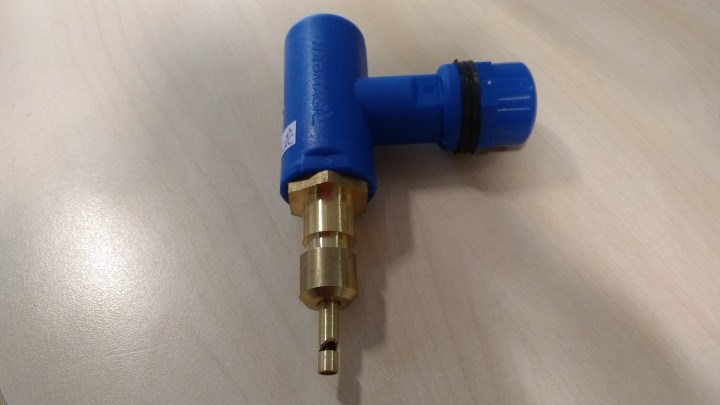Purpose
Handwashing Device for the Promotion of Hand Hygiene
Activities
The first prototype was field tested with refugee populations in Liberia and Kenya to assess its suitability at both household and communal levels. Following this study, the device was modified and field trialled a second time in South Sudan. The South Sudan study looked specifically at the device’s durability at the communal level where it was most likely to be exposed to a significant number of users; notably in schools, next to communal latrines, and food stalls in the marketplace. Following this study, the device was modified and trialled in DRC based on overall feedback and it is now ready for use in emergency contexts.
Images

Image: Handy wash tap © Foyeke Tolani - Oxfam
Countries of activity
Location of main activity
Objectives
The Handy Wash Tap was designed in response for the need for a new device to address hand washing in humanitarian contexts where water is often scarce and taps for hand washing are often the cause of a considerable use of a limited resource. Oxfam in partnership with John Radford and Nag Magic set about to design a tap that would be lightweight, easy to transport, robust, compact, inexpensive and appropriate across genders, ages and abilities. Moreover, it needed to conserve water and prevents re-contamination of the user’s hands.
Further information
It has taken five years and nine prototypes to reach the final product. The Handy Wash device has been found to be culturally appropriate in 4 countries (Liberia, Kenya, South Sudan and DRC), and well received and accepted by the majority of beneficiaries despite differing demographics such as age, ability, gender, income, or education levels. The cost of one device is approximately 3.75 GBP in 2017.
The device is robust and can withstand stress from multiple users in communal areas. It has a push up control made of brass which is difficult to break. It has been tested in schools, at communal latrines in large camps, health centres and market places. In DRC, 95% of devices trialled are still in use after 12 months.
The Handy Wash device is compact and consists of a push up brass rod, a filter at the adapter connecting end, plus 2 washers, elbow and fixing nut, which are packaged together and can easily fit in the palm of one’s hand. One hundred devices can easily fit into a small box or carry-on sized suitcase.
The device is efficient in terms of conserving water and ideal for areas of water scarcity. When compressed, the volume of water emitted by the device is sufficient for handwashing but not for washing clothing or bathing. The average amount of water required for proper handwashing is 80ml. Using this estimation, the average family of 5 washing hands 4 times per day will require a total volume of 1.6l daily, so a 20L will be sufficient for the handwashing needs of a family plus visitors for one week.
The Handy Wash device can be fastened to any type of locally available container. The device functions equally well with 18-20L plastic buckets as well as larger capacity solid plastic barrels (40 – 100L).
The Handy Wash device can be used effectively to facilitate hand washing in emergency contexts. It can be attached to a range of different water containers and is therefore versatile enough for use in different situations. The use of the device will need to be promoted to users and, when used as part of a communal facility, arrangements will need to be made to refill the water container to which it is connected and ensure that the filter in the device is flushed through occasionally.
Contact information
Foyeke Tolani
Login to see the e-mail-adress of the contact person.
Filter tags
Camps (emergency or longer term) Global Health and hygiene International NGO Other funding source or unspecified Product design and engineering Schools Sub-Saharan Africa
















